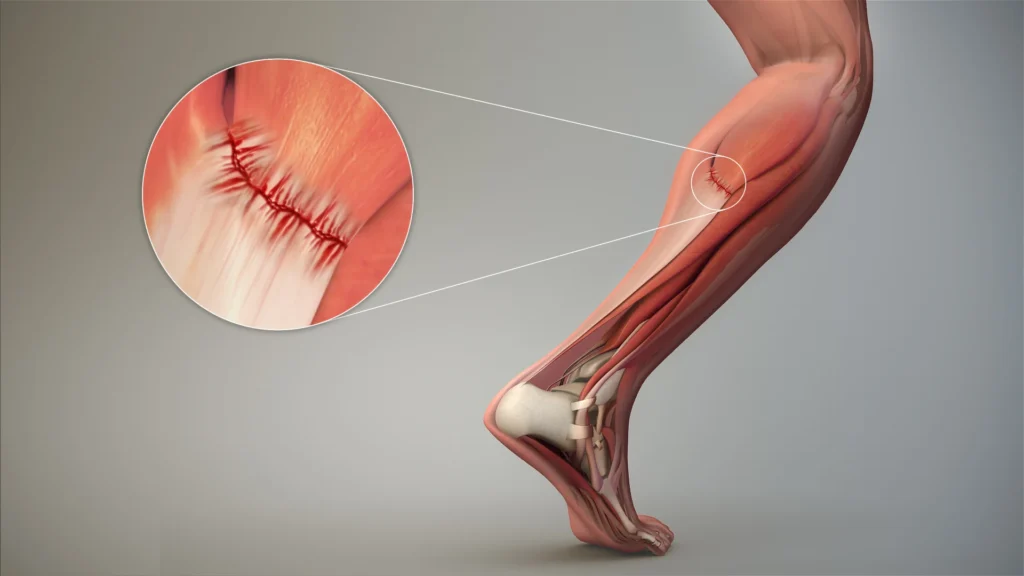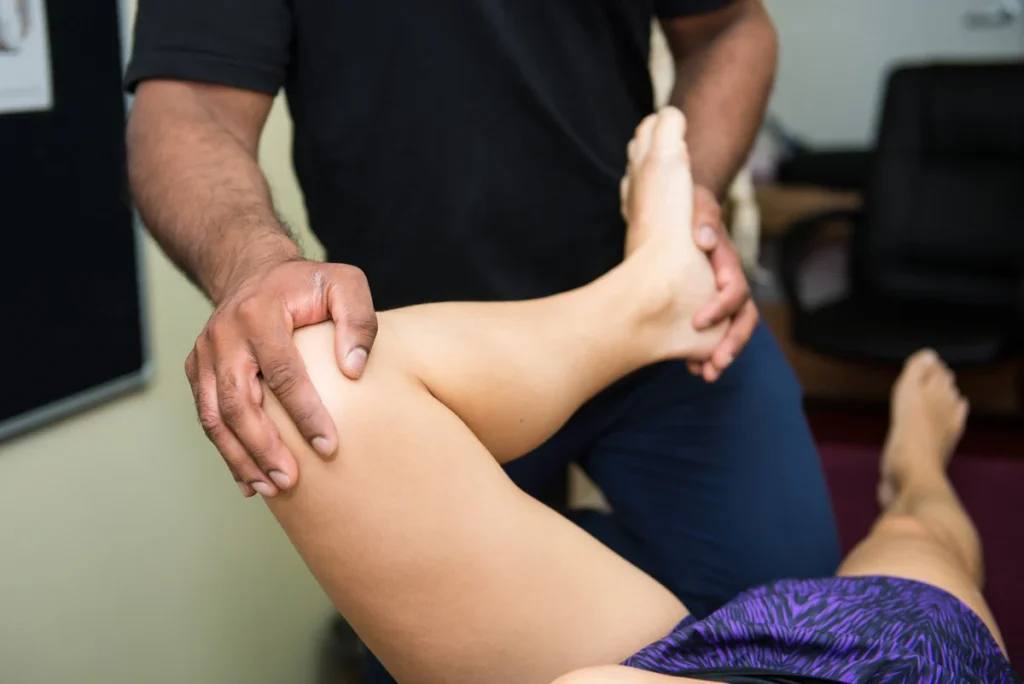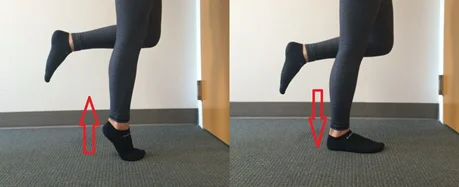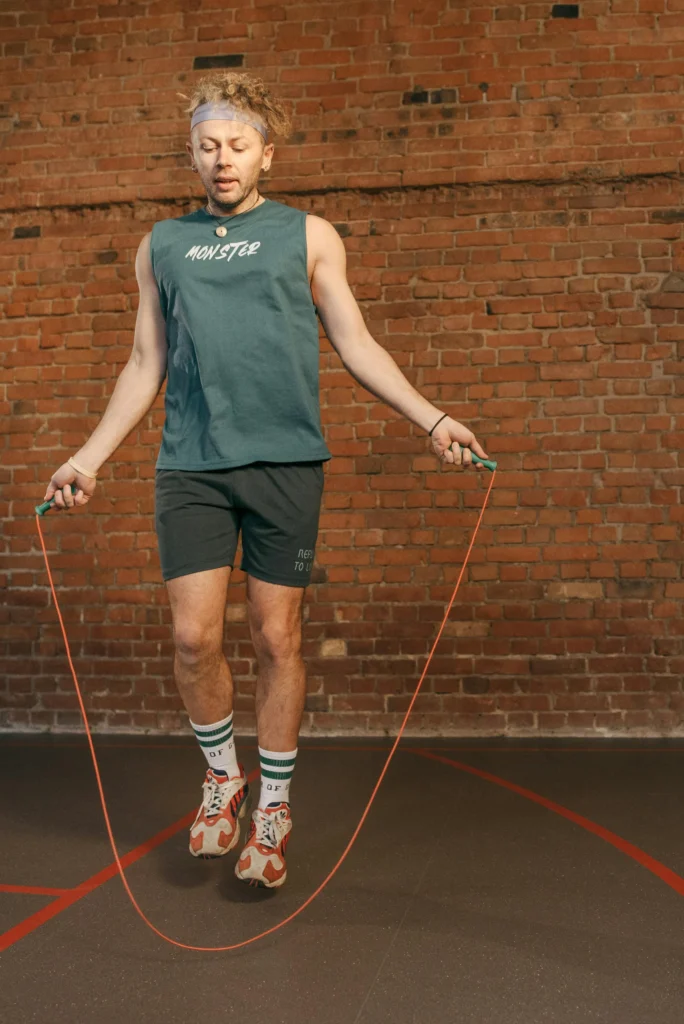

Establishing a Diagnosis:
There are several other conditions and injuries in the calf area that can masquerade themselves as
calf strains. A detailed assessment of mechanism of injury, symptoms and a physical assessment will
help determine whether an injury is truly a calf strain or not. Rehabilitation can begin once an
accurate diagnosis has been made.
Rehab Phase 1: Letting Symptoms Calm Down
If there is significant pain or the calf is very easily irritated, then a short period of rest may be
helpful. Loading and stress to the calf should be reduced enough so that symptoms settle enough to
safely begin strengthening exercises. This phase can last anywhere from a couple days up until 1
week.

Rehab Phase 2: Early Stage Strengthening
Exercises such as calf raises, calf raises off a step and seated calf raises (double leg and single leg) are common exercises used to strengthen the calf musculature. Variables including range of motion, speed of contraction, weight, repetitions, sets and frequency must be tailored to a person’s symptoms. A good strength goal to aim for is an equal number of repetitions during the single leg calf raise off the step exercise in the affected and unaffected leg.

Rehab Phase 3: Plyometric Exercises & Ongoing Strengthening Exercises
Plyometric exercises are more high speed and explosive exercises. These exercises are used to bridge
the gap between strengthening and return to sport or running. They are more controlled than actual
running and sports but at the same time resemble higher level activities more closely than simple
strengthening exercises. Examples of common plyometric calf exercises include hopping, bounding,
and skipping.
Rehab Phase 4: Return to Running & Ongoing Strengthening Exercises
Gradual and low intensity jogging should be implemented as soon as it is safe to. A gradual and
graded progression from slow jogging until running is essential for individuals with the goals of evenutally returning to running or sport. Speed, duration, frequency must be carefully tailored to maximise speed of progress while reducing the risk of doing too much too soon. Gradual progression of these variables along with ongoing strength training will get most people back to 100% function.
Rehab Phase 5: Injury Prevention
Some individuals are more prone to recurring calf strains than others. Recurrence of calf strains are most common in the first couple of months after returning to running or sport. It is important that ongoing strengthening and ongoing load management continue even when you feel fully recovered if you want to reduce the chances of a subsequent injury.
Reach out to our team of experienced physiotherapists to assess your calf strain today!
